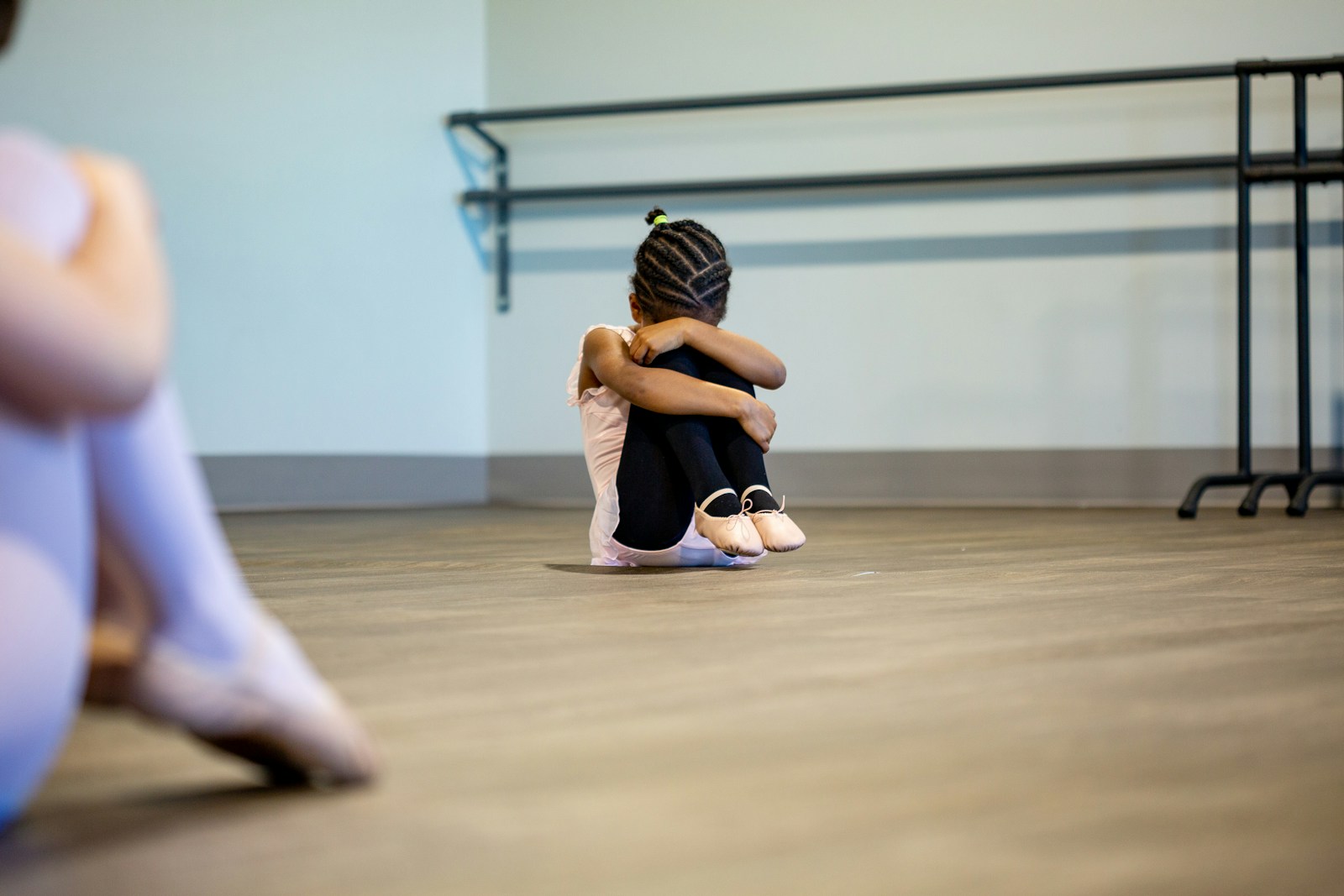Table of Contents
- Grasping Childhood Trauma and Its Lasting Impact
- Spotting Symptoms of Childhood Trauma Fatigue
- Science-Supported Paths to Recovery
- Navigating Challenges in Trauma Recovery
- The Critical Role of Professional Guidance
- Conclusion
Grasping Childhood Trauma and Its Lasting Impact
Childhood trauma can stem from various adverse experiences—abuse, neglect, or even merely witnessing violence. Consider this: The National Child Traumatic Stress Network once estimated that around 35 million children in the U.S. encounter trauma annually. The repercussions? They often stretch well beyond those early years, affecting mental and physical health long into adulthood.
Unveiling Trauma Fatigue
Trauma fatigue manifests as a debilitating exhaustion born from long-term trauma exposure. The American Psychological Association has highlighted that it can trigger anxiety, depression, and emotional numbness. For those dealing with childhood trauma’s residual effects, these symptoms might not just linger but deeply disrupt, throwing normal development and stress responses out of gear.
Diving into the Biology
Scientific research indicates that trauma can recalibrate areas of the brain like the amygdala and hippocampus. This rewiring affects emotional regulation, memory retention, and overall cognitive function—key elements contributing to trauma fatigue. The brain’s stress regulation system, the HPA axis, can also become unbalanced, intensifying one’s stress reactions over time.
Spotting Symptoms of Childhood Trauma Fatigue
Acknowledging trauma fatigue marks the initiation of recovery. Here’s what to look out for:
- Emotional Indicators: Anxiety, depression, sudden mood changes, irritability.
- Cognitive Indicators: Difficulty concentrating, problematic memory, intrusive negative thoughts.
- Physical Indicators: Persistent tiredness, headaches, and problems with sleep.
Remarkably, a study from back in 2019 in the Journal of Affective Disorders found a link between childhood trauma and chronic fatigue syndrome. Those dots, once connected, paint a more comprehensive picture of the ailment.
Science-Supported Paths to Recovery
1. Trauma-Focused Cognitive Behavioral Therapy (TF-CBT)
TF-CBT is heralded as a robust treatment avenue for childhood trauma survivors. A Chronic Psychology Review meta-analysis showcased its success in minimizing trauma-related symptoms—a beacon of hope for many.
Delving into TF-CBT
This therapy’s framework includes imparting understanding, relaxation techniques, and exposure therapy. By recognizing and combating distorted trauma beliefs, clients move closer to emotional recovery.
2. Embracing Mindfulness and Meditation
Mindfulness isn’t just a trending buzzword. A 2018 study in the Journal of Traumatic Stress noted how mindfulness-based stress reduction can lessen PTSD symptoms among trauma survivors.
How to Start Mindfulness
Start small—dedicate a few minutes daily to meditation or mindful breathing. Apps like Calm and Headspace can guide you through this transformative journey.
3. EMDR Therapy
Eye Movement Desensitization and Reprocessing (EMDR) has made waves for its effectiveness in treating trauma fatigue. According to a 2020 study in the European Journal of Psychotraumatology, EMDR exerted significant symptom relief.
What EMDR Sessions Entail
During sessions, individuals revisit traumatic events while being directed through bilateral stimulation, such as eye movements. This decompresses emotional impact and ingrains healthier trauma narratives.
4. Engaging in Physical Activity
There’s a well-documented relationship between regular exercise and improved mood through endorphin release. Back in 2017, a study in Neuropsychobiology supported exercise as a tool to reduce anxiety and depression among trauma-affected individuals.
Spotlight on Effective Exercises
Activities like running or swimming bolster the mood. Yet, yoga and tai chi offer a blend of physical pursuit and mindfulness, enhancing well-being across the board.
5. Nutritional Measures
Nutrition plays a surprisingly pivotal role in mitigating trauma fatigue. A well-balanced regimen rich in omega-3s and vitamins nurtures brain health, as echoed in the Journal of Affective Disorders through their dietary interventions study.
What to Incorporate in the Diet
Think fatty fish, greens, and berries. These nutrition powerhouses can support cognitive function and alleviate stress.
6. Establishing a Support Network
Vital for trauma recovery is a robust social support system. Touching base with peers, getting involved with family, or participating in support groups—these connections can ease the weight of trauma.
Where to Find Support
Consider trauma-focused communities or online groups. These can offer invaluable experiences and recovery resources.
Navigating Challenges in Trauma Recovery
Managing Setbacks
Some relapses might occur, and that’s okay. Learning to spot our triggers and devise coping strategies is essential. Cognitive behavioral techniques, intertwined with mindfulness, can keep a relapse at bay.
Keeping Motivation Alive
Staying motivated isn’t always straightforward. Short-term goals and celebrating small wins play a crucial role here. Doing things you love can also bolster your recovery journey.
The Critical Role of Professional Guidance
While self-help has its merits, professional advice can be indispensable in trauma recovery. Tailored treatment plans from trauma-informed therapists can make a significant difference.
Initiating Therapy
Thinking of therapy? Reach out to professionals focused on trauma recovery. Organizations like the Trauma Recovery Institute are out there ready to guide you.
Conclusion
The journey through childhood trauma fatigue might seem daunting, but it isn’t impossible. With knowledge of the science behind trauma fatigue and actionable recovery steps in hand, healing becomes attainable.
Whether through therapy, mindfulness, physical vigor, or diet changes, each stride forward narrates the story of one’s resilience. Looking to delve deeper into this journey? Seek personalized guidance and join a supportive community—resources like Hapday are yours to explore.
References
- National Child Traumatic Stress Network. Retrieved from https://www.nctsn.org/
- American Psychological Association. Trauma. Retrieved from https://www.apa.org/topics/trauma
- Bremner, J. D. The relationship between cognitive and brain changes in posttraumatic stress disorder. Annals of the New York Academy of Sciences, 1071(1), 80-86.
- Heim, C., & Nemeroff, C. B. The role of childhood trauma in the neurobiology of mood and anxiety disorders: preclinical and clinical studies. Biological Psychiatry, 49(12), 1023-1039.
- Taylor, R. R., & Jason, L. A. Chronic fatigue, abuse-related traumatization, and psychiatric disorders in a community-based sample. Journal of Affective Disorders, 156, 194-199.
- Cary, C. E., & McMillen, J. C. The data behind the dissemination: A systematic review of trauma-focused cognitive behavioral therapy for use with children and youth. Children and Youth Services Review, 34(4), 748-757.
- Kearney, D. J., Simpson, T. L., Malte,


This article is a treasure trove of information! It’s refreshing to see trauma-focused therapies like TF-CBT being highlighted as effective options for recovery. I particularly appreciate the emphasis on mindfulness and how it can create real change in managing PTSD symptoms. Have you tried any mindfulness techniques yourself? I’d love to hear more about personal experiences!
I’ve started meditating daily, and it’s been life-changing! It helps clear my mind and reduces anxiety significantly.
While the science behind trauma is fascinating, I can’t help but feel overwhelmed by all the suggested treatments. It’s great that there are many options out there, but for someone just starting their recovery journey, where do you even begin? Maybe a simpler approach would be more accessible for beginners?
I totally get that! Starting small with just one technique can make it less daunting. I began with basic mindfulness exercises!
‘Trauma fatigue’ sounds so relatable—it’s like carrying an invisible backpack full of rocks! The connection between nutrition and mental health was surprising; I never thought what we eat could impact our emotional well-being so much. Do you think more people should prioritize diet in their recovery process?
‘Absolutely! A balanced diet not only improves physical health but also supports mental clarity. I’ve noticed a big difference since changing my eating habits.
‘Science-supported paths to recovery’ sounds promising, but does anyone else feel skeptical about some therapies? For example, EMDR seems so unusual—how does moving your eyes help with trauma? It feels a bit too good to be true!
I found the section on mindfulness particularly enlightening! It’s amazing how just a few minutes of meditation each day can create such a profound impact on mental health. I’ve started incorporating it into my routine, and I’m already feeling more centered. It’s like hitting the reset button on my day!
While I appreciate the focus on science-backed recovery methods, I feel that personal stories and shared experiences could enhance the narrative. Sometimes, hearing from others who have faced similar challenges can provide hope and relatability that stats can’t offer.
I completely agree with the emphasis on physical activity as part of recovery. It’s incredible how much better you can feel after a good workout! Whether it’s a brisk walk or an intense gym session, those endorphins really do help combat fatigue. Plus, it’s a great way to clear your mind.
Honestly, some of these methods sound too good to be true. Can mindfulness really reduce PTSD symptoms? I need to see more concrete evidence before jumping in. It just feels like another trend without solid backing in real-world applications.
@Skeptical_Sam You’re not alone in feeling that way! There’s definitely a lot of hype around mindfulness and its benefits. It might work for some but could be less effective for others—it’s all about finding what resonates personally.
@Skeptical_Sam Agreed! I’ve tried various techniques over the years, and while some helped briefly, they didn’t last long term. It’s tough when you’re looking for something reliable that won’t just fizzle out after a few weeks.
@Physical_Pal_77 Absolutely! Exercise is my go-to when I’m feeling overwhelmed by stress or fatigue. It’s also an excellent way to connect with friends; group workouts make everything feel lighter and more enjoyable!
@Mindful_Melody Meditation apps are fantastic for beginners! They guide you through practices step-by-step so it doesn’t feel daunting at all. Plus, there are different types of meditations to suit your mood—definitely worth exploring!
@Curious_Cat123 So true! Real stories can really resonate and inspire people on their healing journey. Maybe sharing testimonials could add an emotional layer to this scientific approach—balance is key!
Nutritional measures surprised me as well—who knew eating well could help with trauma fatigue? I’m definitely going to start adding more omega-3s into my diet because brain health is so important!
The importance of establishing a support network can’t be overstated! Having people around you who understand what you’re going through makes such a difference during recovery.
@Supportive_Sara Couldn’t agree more! Support groups have been life-changing for many people I know; they offer comfort knowing you’re not alone.
@Supportive_Sara True, but finding the right support can be tricky sometimes… Not every group is created equal!
It’s refreshing to see discussions around childhood trauma fatigue becoming more mainstream—people need to know they’re not alone in their struggles.
Agreed! The more we talk about these issues openly, the easier it will become for others to seek help without feeling ashamed.